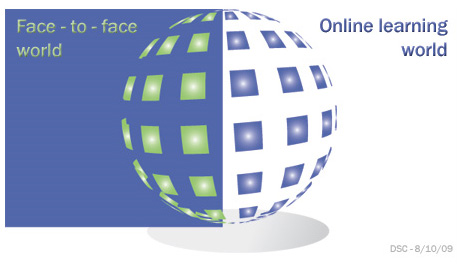The Monster List of 99 Online Learning Resources — from Bloomfire by Nehemiah Chu
From DSC:
Nice work here Nehemiah — a very solid collection of resources.
The Monster List of 99 Online Learning Resources — from Bloomfire by Nehemiah Chu
From DSC:
Nice work here Nehemiah — a very solid collection of resources.
Report on education technology investments — from Education Stormfront
Student advancement will be determined by mastery of subject, not the time spent in class. Through real time and ongoing assessment, the ability to do on-the-fly prescription and “one-on-one” instruction is made possible. “Adaptive Technology” which is used with overwhelming success at companies like Amazon and Netflix, is being incorporated in learning technology that is getting smarter and more personalized with each click. Dreambox Learning is a window to the future showing remarkable results with kids playing math games and learning at an incredibly fast rate. Agilix/Brain Honey is in part a next generation learning management system (LMS) and in part a next generation learning platform that has great traction.
An exceprt from the report at:
http://www.nextupresearch.com/Site/NEXT_up!_files/neXtup%2012.5.10.pdf
The “quiet” growth has been impressive. Currently there are 1.5 million K-12 students online with either a virtual class or blended mode, up from zero students 10 years ago. 38 States have virtual Charter School laws and Alaska has a statewide online program. “Innovator Dilemma” guru Clayton Christensen estimates that 50% of all K-12 classes will be online by 2019.
From DSC:
Thanks crudbasher for publishing this posting. What I found interesting was the amount being invested in the Kno tablet — $46 million. Wow. Change is around the corner…again.
Top 10 Faculty Focus Articles for 2010, part 1 — from Faculty Focus by Mary Bart
Top 10 Faculty Focus Articles for 2010, part 2 — from Faculty Focus by Mary Bart
11/9/10
Abstract:
HyFlex is a course design model that presents the components of hybrid learning in a flexible course structure that gives students the option of attending sessions in the classroom, participating online, or doing both. Students can change their mode of attendance weekly or by topic, according to need or preference. Models like HyFlex, which present multiple paths through course content, may work well for courses where students arrive with varying levels of expertise or background in the subject matter. Courses built on the HyFlex model help to break down the boundary between the virtual classroom and the physical one. By allowing students access to both platforms, the design encourages discussion threads to move from one platform to the other.
The “7 Things You Should Know About…” series from the EDUCAUSE Learning Initiative (ELI) provides concise information on emerging learning technologies. Each brief focuses on a single technology and describes what it is, where it is going, and why it matters to teaching and learning. Use these briefs for a no-jargon, quick overview of a topic and share them with time-pressed colleagues.

From DSC:
Sounds like “Air Play” for learning to me! 🙂
The Coming Golden Age of Open Educational Simulations — from Mike Caulfield
From DSC:
Thanks Mike for sharing this information, these lessons and reflections. Although your posting stopped me in my tracks, it was good to reflect upon. It made me wonder about such things as…
Elliott Masie launches LearningTalks – Free Video Talks on Learning
We are pleased to announce the launch of LearningTalks – a series of short, free, video interviews on learning. This project of The MASIE Center is modeled after the valuable TED Talks, and begins with the release of over 40 segments from Learning 2010. There are interviews with Apolo Ohno, Marshall Goldsmith, Learning Leaders from JCPenny, Yum! Brands, CNN and Peace Corps and many more.
These 3 to 9 minute learning segments are now live at:
LearningTalks – http://www.learningtalks.com
.
Cutting the Pay TV Cord, Chapter 5: Unlimited Internet TV — from Phil Leigh
In short, often there is no reason why modern flat panel TV screens cannot function as giant monitors for up-do-date computers.
Thus a growing number of us are attaching computers to our TVs. The trend is especially prevalent for WiFi enabled computers because they can connect over a home network and thence to the Internet. In such configurations computers – commonly dedicated laptops – function as Internet gateways for televisions. They transform TVs into dual function devices normally controlled from a comfortable viewing distance with ordinary TV remote units.
Also see:
Online education grows by almost a million students — from the Sloan Consortium
Enrollment in online courses increases at the highest rate ever — from The Chronicle by Travis Kaya
Despite predictions that the growth of online education would begin to level off, colleges reported the highest-ever annual increase in online enrollment—more than 21 percent—last year, according to a report on an annual survey of 2,600 higher-education institutions from the Sloan Consortium and the Babson Survey Research Group.
In fall 2009, colleges—including public, nonprofit private, and for-profit private institutions—reported that one million more students were enrolled in at least one Web-based course, bringing the total number of online students to 5.6 million. That unexpected increase—which topped the previous year’s 17-percent rise—may have been helped by higher demand for education in a rocky economy and an uptick in the number of colleges adopting online courses.